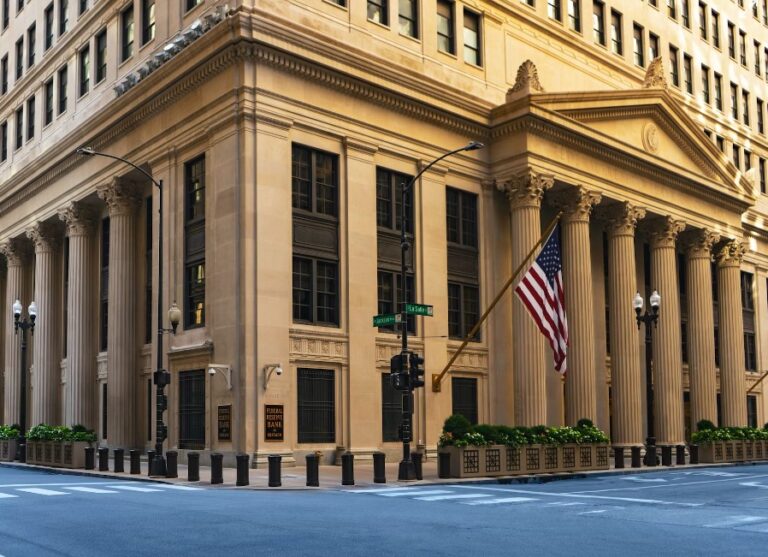We are now a year into the first rate hikes, and there has never been a stop. At least until now, because the Fed may say no this time, after 12 months of continuous increases.
What will decide that, however, will be further assessments by experts, since the target has almost been reached, with national inflation around 3.2 percent.
Not quite the 2 percent called for by Fed Chief Powell. But definitely closer than current European inflation, at 5.3 percent. In fact, if a new hike is now assured for the ECB, it is not said as far as the Federal Reserve is concerned.
Table of Contents
Will the Fed raise rates in September? Inflation will decide
Soon the FED will have to decide whether or not to raise rates for September. If so, it would go from 5.50 to 5.75 percent, a new record for the U.S. central bank, since such a rate has not been seen since 2001.
It could also say no, and in fact many analysts are convinced that this month will be the first in which the Fed will not provide a new hike.
The reasons for this potential (and temporary) halt would be the effects of monetary tightening on the U.S. labor market and falling inflation.
Starting at 9% in June 2022, today the U.S. economy finds itself at 3.2%. Closer to the 2% target set by Fed chief Powell. And perhaps enough to not go any further with the hikes, given also the huge increase in outstanding mortgage costs.
This, however, may not coincide with what is happening in Europe. Instead of 3.3 percent, Eurostat has certified inflation for August 2023 at 5.3 percent.
Quite far from the same 2% target espoused from the start by current ECB President Christine Lagarde. Moreover, the European economy is not as bright as the U.S. economy, at least from the latest data on output and estimated GDP for 2023 and the years to come.
Read also: Mortgages and interest rates: the relationship with inflation
U.S. GDP at 5.9 percent, the Fed’s latest estimates
Currently, the U.S. is in a barrel. Economically, they have had a reduction in the unemployment rate, which fell to 3.5 percent in August thanks to the creation of more than 1 million jobs in the past six months.
In turn, the Atlanta-based FED estimated annual GDP growth at 5.9 percent, about three times the estimated neutral rate. News that would give reason for the FED to ease its tightening of interest rates for a moment, and talk about it again in November or December.
Yet there is no shortage of warnings. Despite the jobs created, analysts saw a slight slowdown in job growth, at least compared to expectations. From an average of 271,000 per month, only 187,000 were recorded in August.
Crucial node, however, remains the issue of fuel prices, still above $3 a gallon (for more than a decade it has been traveling between $1 and $2 a gallon).
The FED itself fears that there will be an increase in commodity prices, particularly oil, in the coming months. And that this could produce a further inflationary effect, leading to an immediate break in the truce on rates.
ECB to revise inflation estimates
Compared to the European situation, the American situation is decidedly rosier. In fact, the ECB finds itself with high rates but equally high inflation. 5.3 percent core inflation in August 2023, up from 10.6 percent in October 2023.
Progress not on par with the U.S. In fact, the ECB is reluctant to give a clear indication on the September decision. But there is no question that Europe is not growing as it should.
It must be said that the reasons for the European slowdown are different from those in the U.S. European GDP includes many national realities, very heterogeneous from each other.
And each with its own problems, such as the energy issue in Germany. Or the high rates recorded in Italy, which have made it among the worst EU nations in terms of GDP. That is why from the forecast of 1.1 percent the ECB had to correct downward, going to 0.8 percent.
The risk of recession is not so far-fetched, in fact the Bank itself fears that further hikes could put the economies hardest hit by this monetary policy, among the heaviest in the past 10 to 15 years.
But with a common goal such as lowering inflation, it is difficult to oppose and go the opposite way. The strong interdependence between the two economies would make it more difficult.
In addition, leaving inflation above 2 percent, an estimate that the vast majority of economists suggest maintaining, would be even more dangerous, because it would drain the savings and purchasing power of consumers and businesses.
And the best weapon is that of hikes. Thus, even if that meant increasing the cost of existing loans and mortgages (if variable), and making those from scratch even more expensive, as is happening with mortgages in Italy.
To know more about the future of the ECB’s monetary policy will have to wait for the inflation review. Recall that in June it was estimated to average 3 percent in 2024 and 2.2 percent in 2025. They will probably have to adjust the target at the next meeting, this time upward.












